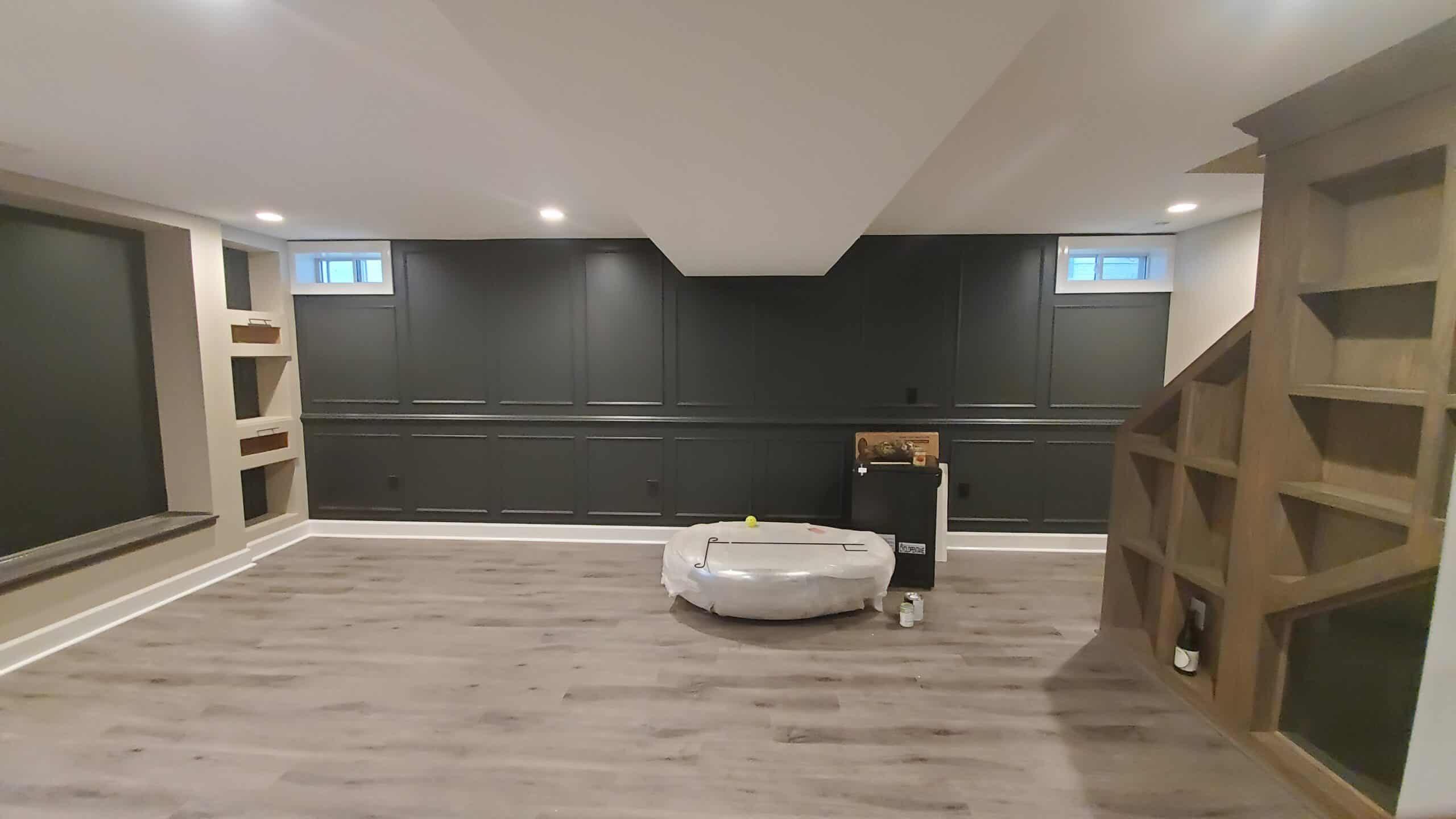We’ve all been there—you finish painting a room, eager to put everything back in place and admire your hard work. But hold on!… How long does it take for interior paint to dry?
Rushing the process can lead to frustrating mistakes like smudges, peeling, or even ruining the finish you worked so hard to perfect. Understanding how long it takes for interior paint to dry is essential to avoid these issues and get the results you’re looking for.
In North Potomac, MD, where weather can swing from hot and humid to cold and dry, it’s crucial to consider how environmental factors impact the drying process. Even when your walls feel dry to the touch, the paint may still be soft underneath, leaving it vulnerable to damage. This blog covers everything you need to know about drying times and shares practical tips for achieving a flawless, durable finish on your next interior painting project.
Key Takeaways:
- Learn how long does it take for interior paint to dry and fully cure to prevent common mistakes like smudging, peeling, or uneven textures.
- Factors such as paint type, temperature, humidity, ventilation, and application technique all affect drying and curing times.
- Properly managing the drying and curing process ensures a flawless, long-lasting finish for your home.

How Long Does It Take for Interior Paint to Dry?
The time it takes for paint to dry can vary based on the type of paint you’re using and how you apply it. There are several stages of drying, with the first being “dry to the touch,” when the surface feels dry but may not be ready for recoating or use just yet. Then there’s the period where the paint is ready for another coat, and finally, full curing, when the paint is tough enough to withstand daily wear and tear.
Here’s a general timeline for how long it takes different types of interior paint to dry:
- Latex Paint: Dries to the touch within 30-60 minutes and is ready for a second coat in about 2-4 hours. Latex is popular for its quick drying times and ease of use.
- Acrylic Paint: Similar to latex, acrylic dries to the touch in 30-60 minutes and is ready for a second coat within 2-4 hours. It’s ideal for high-traffic areas like hallways and kitchens due to its durability.
- Oil-Based Paint: Takes longer to dry, typically 4-6 hours to the touch and about 8 hours before you can apply another coat. Oil-based paint is a good choice for doors, trim, and cabinets because of its smooth finish and resistance to wear, but patience is key with these longer drying times.
These drying times are just estimates, and actual times may vary depending on the conditions in your home. For the best results, always follow the manufacturer’s instructions.
How Long Does It Take for Interior Paint to Fully Cure?
Curing is the final stage of the painting process, and it’s different from drying. While your walls may feel dry within hours, the paint won’t be fully cured—meaning it hasn’t hardened completely—until much later. How long does it take for interior paint to fully cure? That depends on the type of paint.
- Latex and Acrylic Paints: These paints typically take 14-30 days to fully cure. During this time, the paint hardens and becomes strong enough to resist scratches, dents, and general wear and tear.
- Oil-Based Paints: Oil-based paints cure faster, often within 7 days, but they still need time to reach their full hardness and durability.
During the curing process, it’s important to avoid heavy contact with the painted surface. Avoid hanging items on the walls, washing them, or leaning furniture against them too soon. Being patient during this phase will ensure your paint job remains smooth, strong, and long-lasting.
Factors That Affect Paint Drying and Curing Times
How long does it take for interior paint to dry? Several factors can impact how long it takes for your paint to dry and cure. Let’s explore the key factors that play a role in the drying process:
1. Room Temperature
Temperature has a huge impact on how long it takes for interior paint to dry. Paint generally dries faster in warmer temperatures, but extreme heat can cause the surface to dry too quickly while the layers underneath remain soft. This leads to uneven drying, which can create bubbles or a streaky finish. On the other hand, cold temperatures slow down the drying process significantly, sometimes by hours or even days.
For optimal drying conditions, aim to keep your room’s temperature between 60-80°F. This range ensures that the paint dries evenly without compromising the integrity of the surface.
2. Humidity Levels
High humidity levels can be a painter’s worst enemy. In humid climates like Vienna, VA, the extra moisture in the air makes it harder for the paint to evaporate and set properly. As a result, the drying process is prolonged, and the surface may remain sticky longer than expected. If humidity is above 50%, consider waiting for drier conditions or using a dehumidifier to help reduce moisture in the room.
For water-based paints, humidity is particularly problematic, as moisture can get trapped in the paint layers, causing long-term issues like bubbling or peeling. Keeping the humidity level under control will speed up the drying process and ensure a smoother finish.
3. Ventilation
How long does it take for interior paint to dry? Ventilation is one of the easiest ways to improve drying times. Poor airflow traps moisture and fumes in the room, slowing down the evaporation process. By keeping windows open or using fans, you can help the paint dry faster and more evenly.
Proper ventilation also helps to eliminate paint odors more quickly, making the room more comfortable to work in. Just be careful about opening windows in particularly humid or windy conditions, as that can introduce more moisture or dust, which may affect the finish.
4. Paint Thickness
The thickness of the paint plays a crucial role in drying times. Thicker coats take much longer to dry than thinner ones and can result in an uneven texture or finish. Applying paint too thickly can cause surface cracks as the top layer dries faster than the lower layers.
For the best results, apply thin, even coats of paint. While it may take a little longer because you’ll need multiple coats, the end result will be smoother and more durable. Be patient and allow each coat to dry fully before applying the next one.
Final Thoughts
So, how long does it take for interior paint to dry? While drying times can vary depending on the paint type, application technique, and environmental factors, taking your time and allowing the paint to fully dry and cure is essential for achieving a beautiful, long-lasting finish. Rushing the process can lead to smudges, peeling, or uneven textures, so patience is key.
At JC Custom Painting LLC, we specialize in delivering professional painting services in Alexandria, VA, and surrounding areas. From helping you choose the best paint for your project to ensuring it’s applied with precision and care, our team is dedicated to providing top-quality results. We’ll guide you through the process, from start to finish, making sure your project goes smoothly and stress-free.
Call us at 571-575-6818 for a FREE estimate and let us bring your vision to life with a beautifully painted space!

